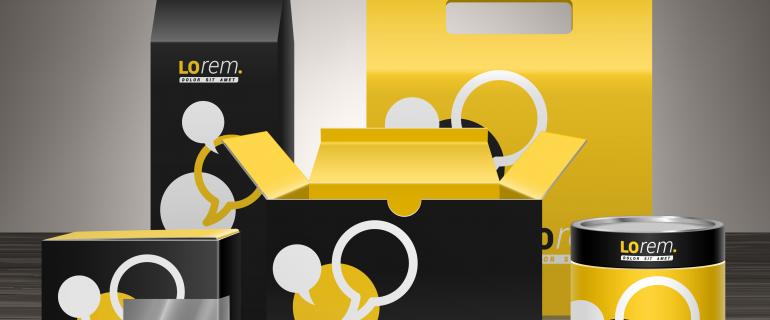Three Subtle Ways Packaging Affects Sales That You Might Not Have Considered
Among both established brands and newcomers, around 80 percent of all new consumer products will fail and be discontinued within a year of their launch. Many of these products’ fortunes were made or broken on the store shelves, where consumers flex their power of choice by deciding which goods make it into their shopping baskets.
Packaging is therefore a crucial element to a product’s success. The final choices consumers make are often based on subtle effects achieved through packaging design.
So what are these subtle effects? And how can your brand use them to find greater market success? Learn how packaging affects sales, so that you can leverage your knowledge to your benefit.
Packaging Shape Can Affect Normative Gendered Perceptions
The shape of packaging invokes strong assumptions about its contents. For example, packages with hard angles or bulky proportions tend to be thought of as hardier and more suited to rugged applications. On the other hand, slimmer packaging or curvy packaging that evokes nature tends to be thought of as elegant and more valuable. The fact that many products that use curvy packaging tend to have a smaller unit size and a higher price tag correlates to the latter effect.
Companies bringing new products to market can rely upon these associations to catch attention or define their unique niche. For instance, suppose there’s a dish soap brand that wants to find a market among men who feel insecure about doing what they may view as “feminine” chores – or spouses who want their non-dish-doing partners to pull more weight. While most modern soap bottles are slender and ergonomic, a bulky, squared-off squeeze bottle might provide a striking alternative.
Even when using rectangular boxes, these subconscious associations can come into play. Experiment with proportions along your X-, Y-, and Z-axes to develop a unique-looking shape that can catch attention while still suiting your product.
Packaging Color Can Affect Perceived Taste
Have you ever argued with someone whether a certain beverage tastes better out of a bottle or a can? You are certainly not alone! In fact, studies confirm that consumers report different flavor profiles for the exact same product based on the color of the package that contains it.
For example, when Coca-Cola came out with a limited edition white can design depicting stylized polar bears, consumers complained that it didn’t taste as sweet. The same study also found that when popcorn was eaten out of red bowls, subjects reported that it tasted sweeter.
Some scientists theorize that humans evolved color vision so that we could tell ripe fruits from unripe ones. Kissmetrics reports that as much as 85 percent of buying considerations come down to packaging color schemes.
The one catch is that responses to color choices can vary dramatically between product categories or even market contexts, such as one product type being dominated by a highly recognizable brand. Conduct A/B testing of color variants as well as vigorous market research to determine your unique product’s optimal strategy given these mitigating factors.
Texture Demonstrates How Packaging Affects Sales Through Differentiation
Matte plastics and paper finishes have made a huge surge in the consumer marketplace in the past few years. Their trending popularity likely stems from the fact that flatter packaging finishes are seen as more textural, intriguing our brains and inviting us to lift the item from the shelf to feel it. By comparison, a glossy finish on packaging could communicate artificialness or a detached sense of sterility.
Because of this trend, many products are embracing more complex packaging designs, such as having an extra paper sleeve with a quilted finish to draw in the consumer’s interest. “Textures draw us in, asking us to engage and spend more time examining a piece. Rough, toothy textures are active, calling out to the viewer for interaction. Smooth textures can create a sense of quiet, restful luxury,” explains Tom Wright, director of advertising and design for Neenah Paper.
Textural effects work even when the texture is merely simulated. For example, Caribou Coffee recently switched to a pre-printed pattern on its plastic packaging that mimics a burlap sack texture. This strategy strongly evokes a more natural, fresh-from-the-market type of coffee bean and serves as a visual brand differentiator on the shelf.
No matter what approach you use to packaging to generate more sales, your success will be dictated by the quality of machinery you use. Whether that refers to print-and-apply labelmakers that put the finishing touch on your packaging or to vision systems that scan for defects, the equipment you use affects both your process and the final results of the product.
Let Raab Sales Help with Your Packaging Solutions
You understand how packaging affects sales. Now, it’s time to put together the right packaging to move your product. Find the exact solutions you need to embrace novel packaging ideas and earn your place within your market when you contact a Raab Sales consultant today.


Comments
Add your comments